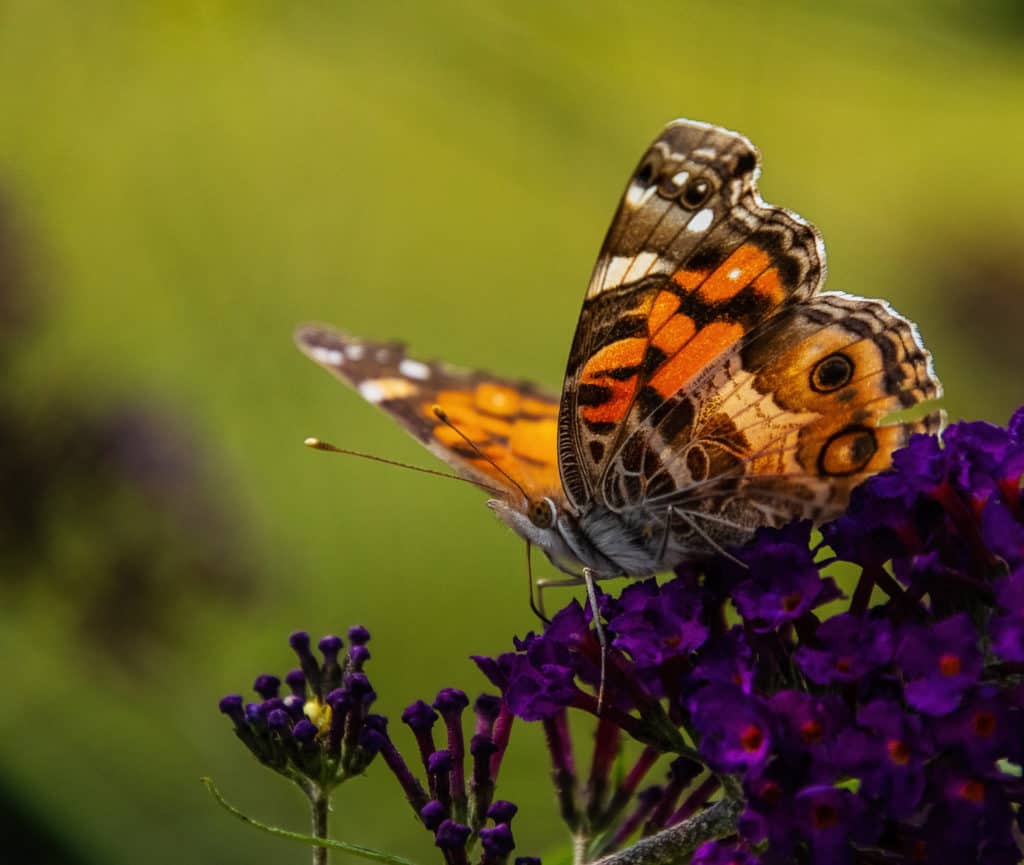Butterflies are amazing, beautiful creatures that are often difficult to photograph as they are constantly moving and fluttering. They are very important pollinators that provide essential assistance to seed and fruit production and to our ecosystem by pollinating an extensive variety of nectar plants. There are an estimated 750 butterfly species in the United States and about 17,500 species in the world. These delicate and beautiful creatures need to be photographed in order to bring awareness to the declining butterfly species, such as the western Monarch butterfly.
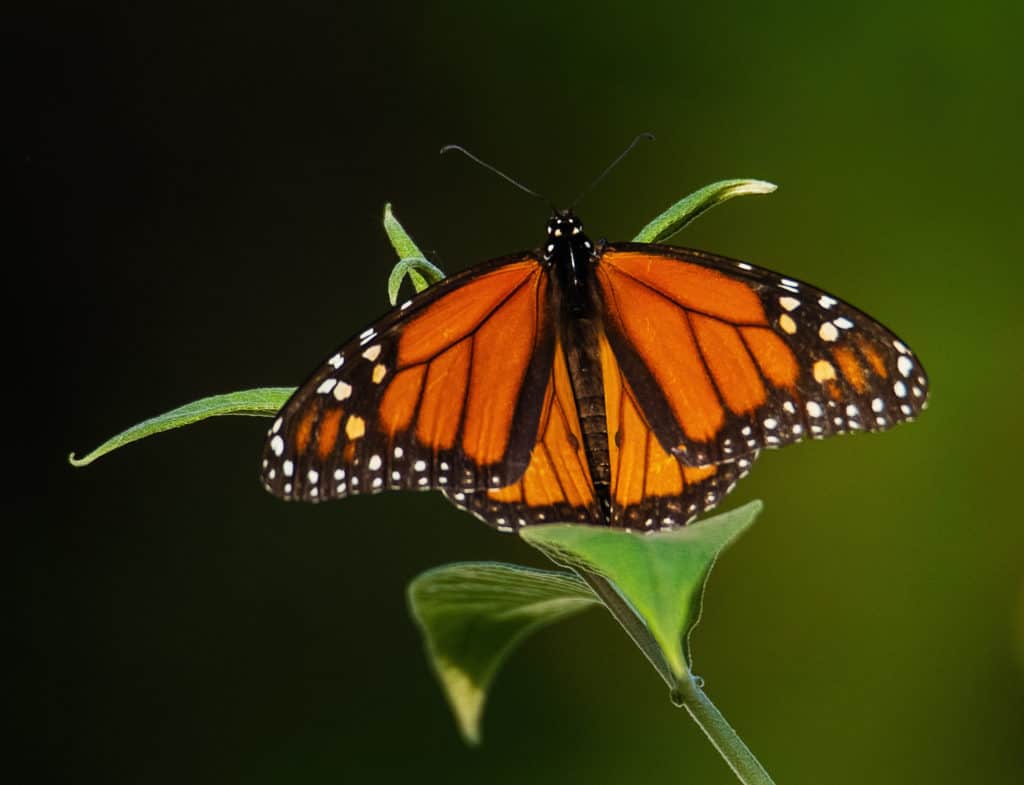
In this article, I will discuss how to photograph the life cycle of these splendid creatures within a natural setting of a butterfly garden. This past summer and fall, I spent time in my backyard butterfly garden photographing the life cycle of the eastern Monarch butterflies. However, all butterflies go through the same life cycle, and the technical information can be applied to all butterflies depending on the particular behavior of each species.
While I have previously photographed butterflies over the decades in different settings, a year ago I created a butterfly garden when I moved into my new house. I have been through two seasons now. The first year I had planted swamp milkweed and butterfly weed for the Monarch butterflies, as these plants serve as host plants for this species. In addition, I planted a fennel plant in hopes of attracting black swallowtail caterpillars. Even though the garden was created at the beginning of August last year, I had dozens of black swallowtail caterpillars on my fennel plant, which is one of a variety of host plants for the black swallowtail. Other host plants include dill, parsley, and carrot tops. I had about a dozen Monarch caterpillars feeding mostly on the butterfly weed.
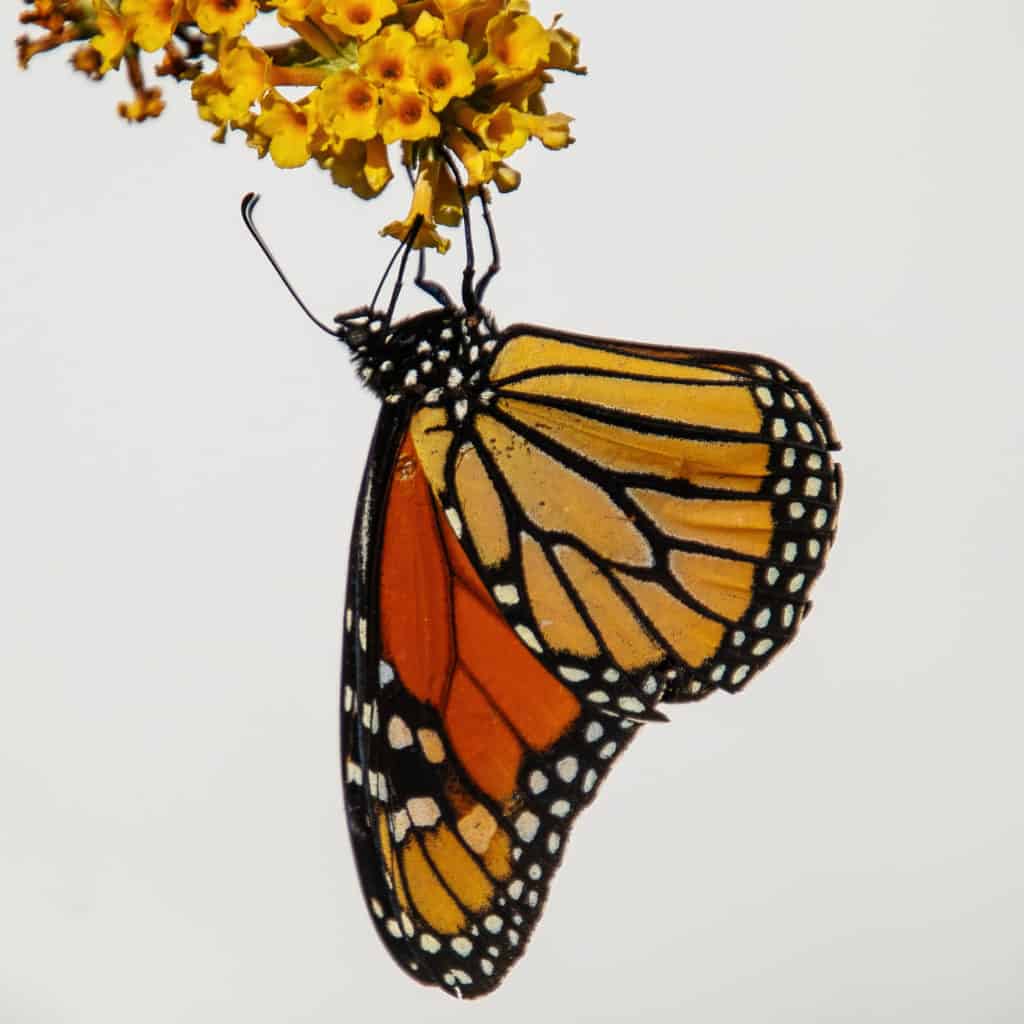
Now that I knew I could attract the caterpillars to the garden, my goal for this past spring, summer, and fall was to photograph the life cycle of a butterfly in the natural garden setting of my certified butterfly garden, which is also a certified Monarch Waystation. This spring, I enlarged my garden and added more varieties of nectar plants, as well as over 17 milkweed plants, including swamp milkweed, common milkweed and butterfly weed.
Knowing your subject, the butterflies and their life cycle, will give you many advantages to being prepared and to knowing how to capture the four stages of a butterfly life cycle. These four stages include the egg, the larva, the pupa or chrysalis, and the adult butterfly.
Summer is usually the peak butterfly activity time when the weather is warm and sunny. However, contingent upon your location in the world and the type of butterfly species, the time of year may be different. Typically, here in the United States, the butterfly season can start as early as March and go through late October.
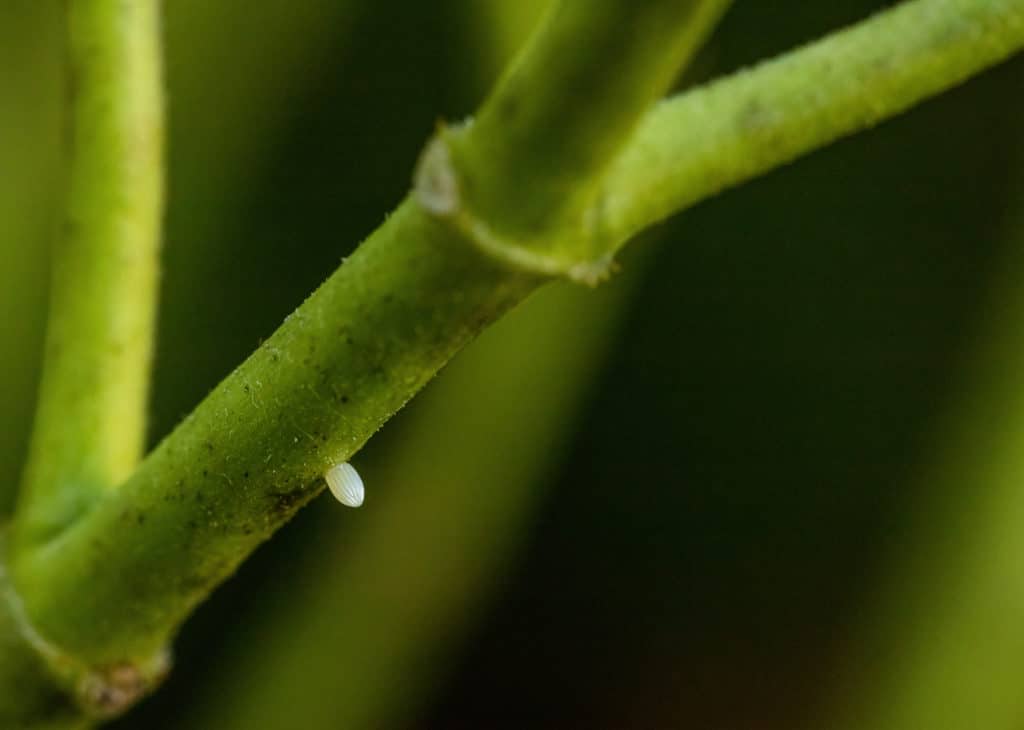
The first stage of a butterfly cycle is when the female butterfly lays her egg. Depending on the species of butterfly, the first stage will depend on what host plant is used and where the egg may be laid. Some butterflies may lay their egg underneath a leaf, or on top of a leaf or flower, or on the stem of a plant or flower. These eggs are very tiny and vary in size, usually around 1 to 3 mm. Most often a magnifying glass is helpful for finding the eggs, especially if you have not observed the butterfly laying the egg. The butterfly eggs come in different sizes, shapes, and colors depending on the species. The egg laid by the female butterfly is attached to the leaf or stem by a secreted sticky glue-like substance. A female will often lay hundreds of eggs within a two-week period.
In the case of a Monarch butterfly the egg is white and shaped like an oval, and they will be generally laid underneath a leaf on a milkweed plant, which is the only plant that serves as a host for the Monarch caterpillars.
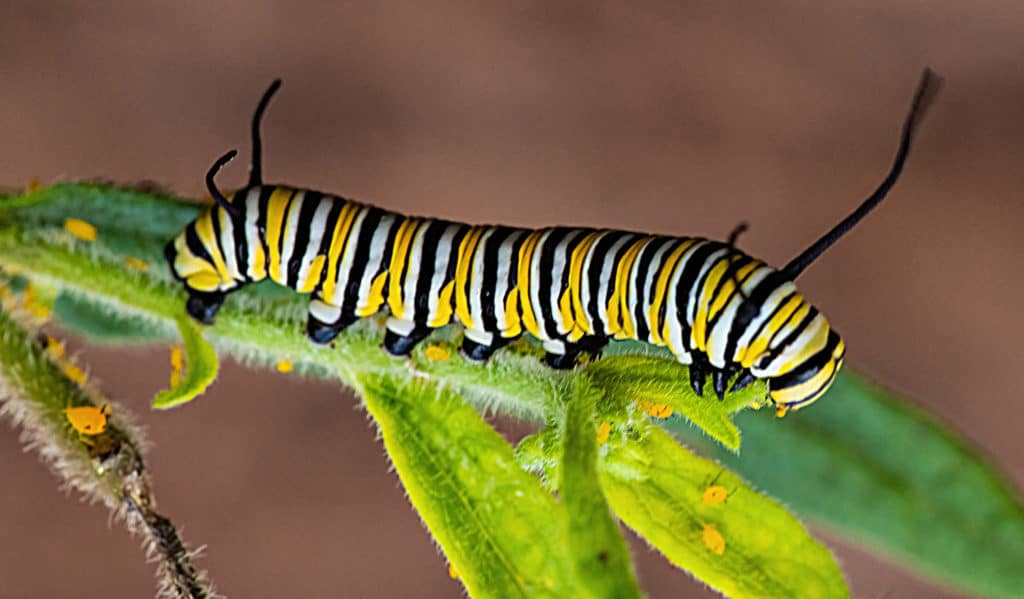
When photographing such a small subject as the butterfly egg or a very small instar, a macro lens is essential. The best focal length for a macro lens for butterfly photography would be between 100 to 200mm so that there is no disturbance of the egg or instar. Since these subjects are not fast-moving, you can get away with using a slower shutter speed and a larger aperture for better depth of field or sharpness of the egg, such as an aperture from f/8 to f/16.
The second stage of a butterfly life cycle is when the egg, after 3-7 days, turns into the larva. The caterpillar stages are called instars, and each species may vary in how many instar phases the caterpillar molts or sheds its skin through before turning into a chrysalis. Once the caterpillar hatches from the egg, the caterpillar would be called the first instar with the fully grown caterpillar being a fourth or fifth instar based on the species of butterfly.
The Monarch caterpillars have 5 instar phases through which they will transform before the caterpillar is fully grown and ready to go to the third stage of the life cycle to become a chrysalis or pupa. Often the larva or caterpillar phases last around 4 weeks, as the caterpillars grow from a very tiny caterpillar to a much bigger one by eating the leaves and stems of their host plants. As a caterpillar, they will spend all their time eating and growing and preparing for the chrysalis stage of the life cycle. Once the caterpillars reach a later instar stage, using a fast telephoto lens would be essential, as the caterpillars will begin to move around, actively eating leaves.
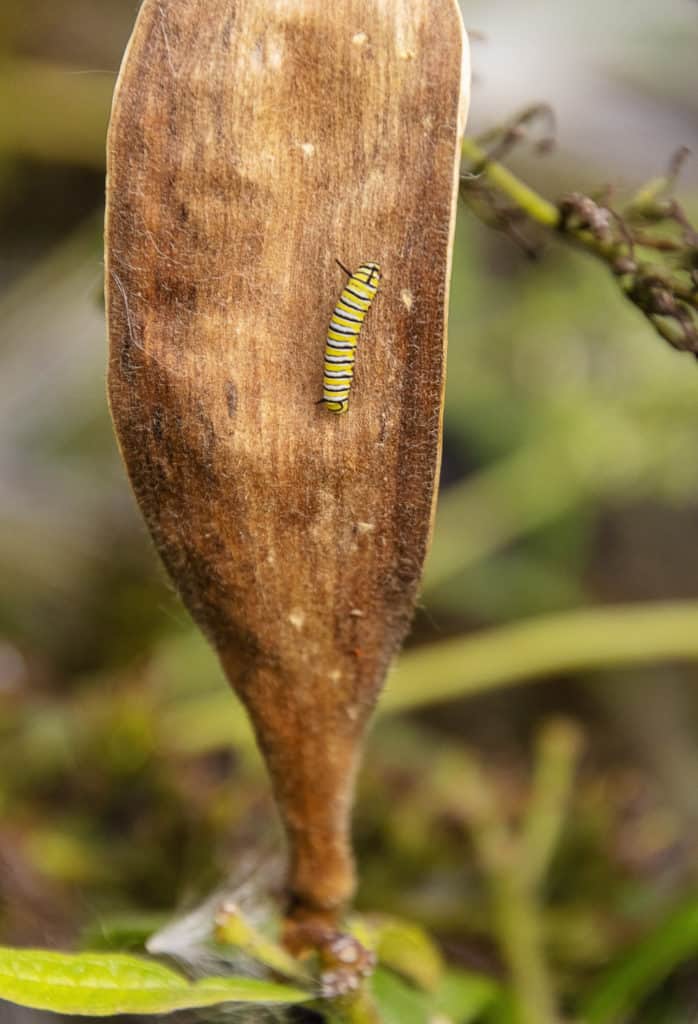
When the caterpillar is finished fueling up on their host plant leaves, they will leave the plant and seek out a safe place away from predators (wasps, birds, spiders, and fire ants). When they find their safe place, they will start the third life cycle stage by attaching a wad of silk to an object so that they can hang upside down in a “j” position. They will begin spinning the silk around their caterpillar body to form a chrysalis. This process takes up to 18 hours, after which it usually takes another couple of days before the chrysalis hardens. The chrysalis varies in color depending on the species of the butterfly.
In the case of a Monarch chrysalis, the chrysalis starts out a light green color with gold dots and turns to a darker green as it hardens. The chrysalis will be formed on and hang from a variety of different locations, such as under wooden structures like butterfly houses, on the siding of buildings, on plants themselves, wooden fences, planters, or hanging planters. This phase will last at least 8-15 days for the Monarch before a change begins to occur, when the colors of the Monarch’s wings, which are orange and black, begin to appear through the chrysalis. When the chrysalis is completely translucent and you are able to see the orange and black wings of the Monarch, it is often an indicator that the Monarch butterfly will emerge or eclose usually within a day.
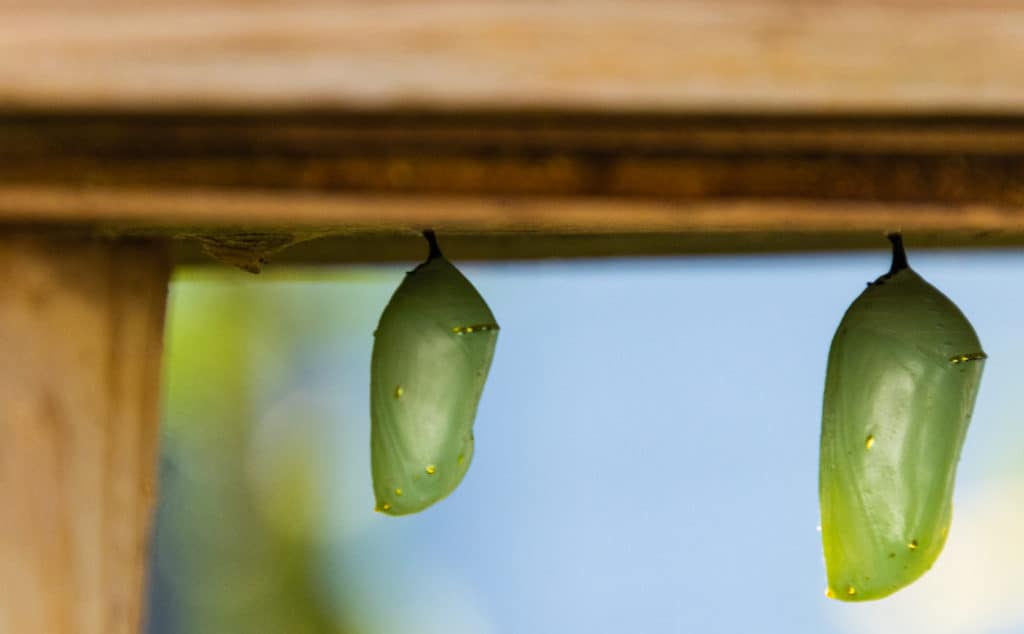
When photographing a chrysalis, depending on the location, either a longer macro lens or telephoto lens would be suitable in order to maintain a safe distance to keep the chrysalis safe. Using a tripod or monopod is really a personal preference. With today’s ability to increase ISO, handholding is easier, especially when photographing in tight spaces such as with plants in a backyard garden. Also, it is recommended to use a more wide-open aperture, such as f/5.6, to ensure the background is not a distraction and becomes blurred, making the chrysalis stand out in the image.
The final stage of a butterfly life cycle is when the adult butterfly emerges from its chrysalis or pupa. Once the species of butterfly gets ready to emerge from the chrysalis, the chrysalis will soften so that the butterfly will be able to push through the bottom with its legs and remove the fibers from around the eyes and proboscis, which is the tongue-like tube used to suck the nectar from plants. Eventually, the newly formed butterfly will crawl out of the bottom of the chrysalis, showing its belly and short wings.
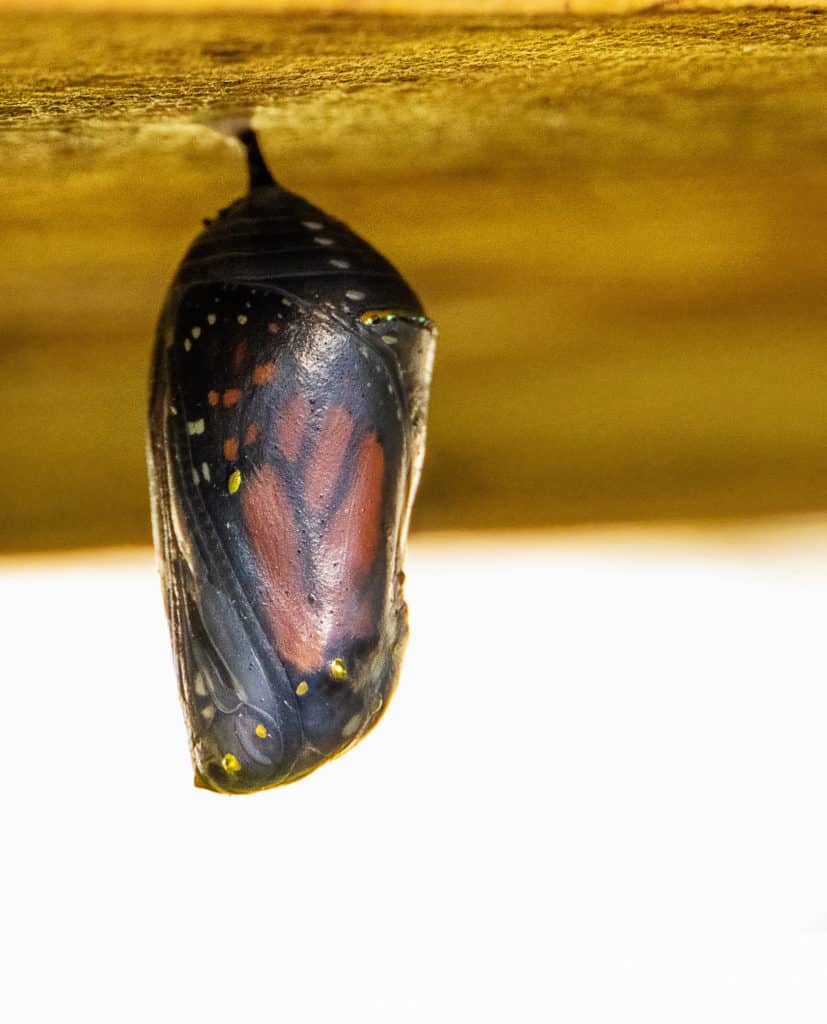
After the newly eclosed butterfly is out of the chrysalis it will need to hang on or near by the empty chrysalis on the structure which the chrysalis had been hanging. This period of time can be anywhere from twenty minutes to two hours depending on butterfly species. This time allows for the moisture to drain from the butterfly’s wings, after which the butterfly will be able to fly off to begin drinking nectar from nearby flowers.
The life cycle change from egg to adult butterfly is called metamorphosis. As a butterfly photographer it is extremely important to know the metamorphosis process of the particular butterfly species you want to photograph. In this case, by doing prior research, you will be prepared to document or photograph the changes that your particular butterfly undergoes by knowing the timing of the changes of their life cycle.
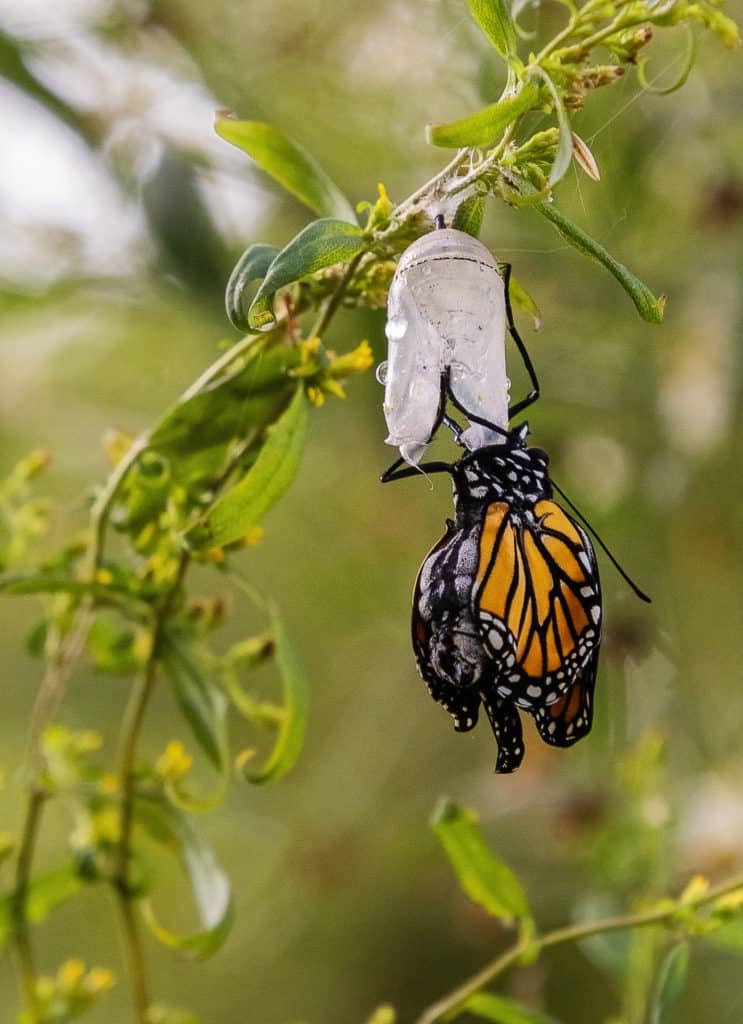
Now that the metamorphosis is complete and the adult butterfly is moving around from flower to flower, I find it much easier to use a telephoto lens, hand held, so that I can move around as the butterfly flutters about the garden. However, you must approach butterflies cautiously. Some species are fearful while other species are more relaxed. Nonetheless, butterflies are known to be fast moving subjects. Therefore, often you will need to be ready to photograph them as soon as they land on a flower. This is why knowing their behaviors is important in order to get that spectacular photograph of a butterfly.
When photographing butterflies, you also want to pay attention to the background and composition of your subjects, from the egg stage to the adult butterfly. Creating a bokeh or blurred background will make your butterfly subject pop, whether it is a caterpillar or an adult butterfly. Using a telephoto lens with a longer focal length will help to create the isolation of the butterfly or caterpillar from its background. By using a telephoto lens, you will not disturb the butterfly life cycle. Also, if interested in showing the environment of caterpillar or butterfly, use a wide-angle lens that will show this context.
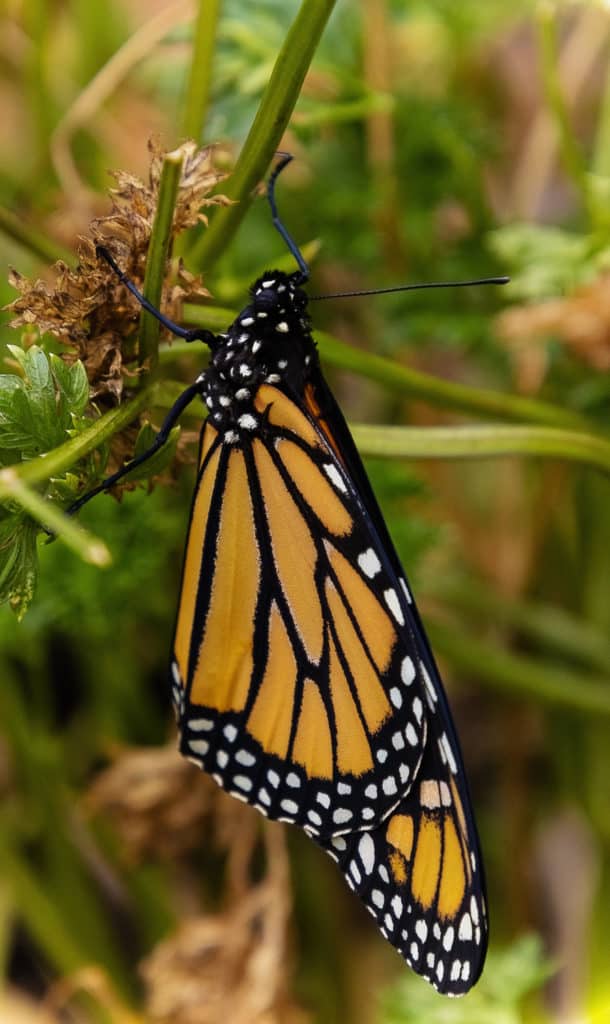
When photographing the adult butterflies, try to photograph the butterflies from different angles and in different lighting situations, such as frontal, back, or side lighting, and adjust your exposure settings based on what type of lighting you are using. Vary your perspective and look for different compositions that are rarely seen. Photographing butterflies with wings wide open or from above will show the beautiful colors and patterns of the wings of the butterflies. Getting down low to photograph the butterflies will give your photographs more intimacy and bigger impact.
Nowadays, with being able to increase ISO, you can hand hold the camera to get in a position to photograph a very small egg on a leaf or stem. I, personally, hand hold my camera and lens when photographing the butterfly life cycle and always never move or touch my subject. I always photograph the butterfly life cycle in its natural outdoor setting. I find the best time of day to photograph the adult butterflies is in the early morning or late afternoon when it is sunny and warm, as the butterflies enjoy the warmth of the day. Sometimes in the cooler mornings the adult butterflies are easier to photograph as they may not move much. Unless you have some shade, try to avoid the harsh lighting of the mid-day, even though it is when the adult butterflies may be most active.
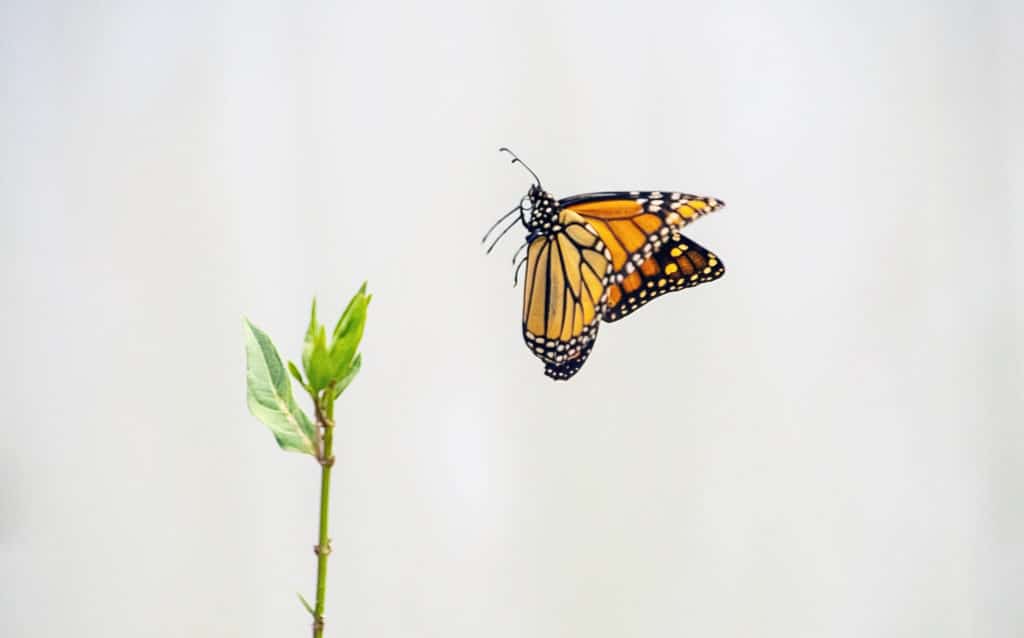
One of the most important settings to decide upon is whether to use manual or autofocus. I, personally, use autofocus and aperture-priority settings when photographing the butterfly life cycle. Always try to focus on the eyes or at the face area of the caterpillar or butterfly using the widest aperture your lens has, such as f/3.5 to f/5.6.
These methods have worked well for me over my many years of photographing butterflies. With much practice and knowledge, the more you photograph the butterflies or the butterfly life cycle, the more you will learn your subjects and discover what photography settings work best for you and your photography. Remember to vary your position and use different lighting situations as well. And you, too, will be able to create magnificent photographs of these magnificent creatures.

